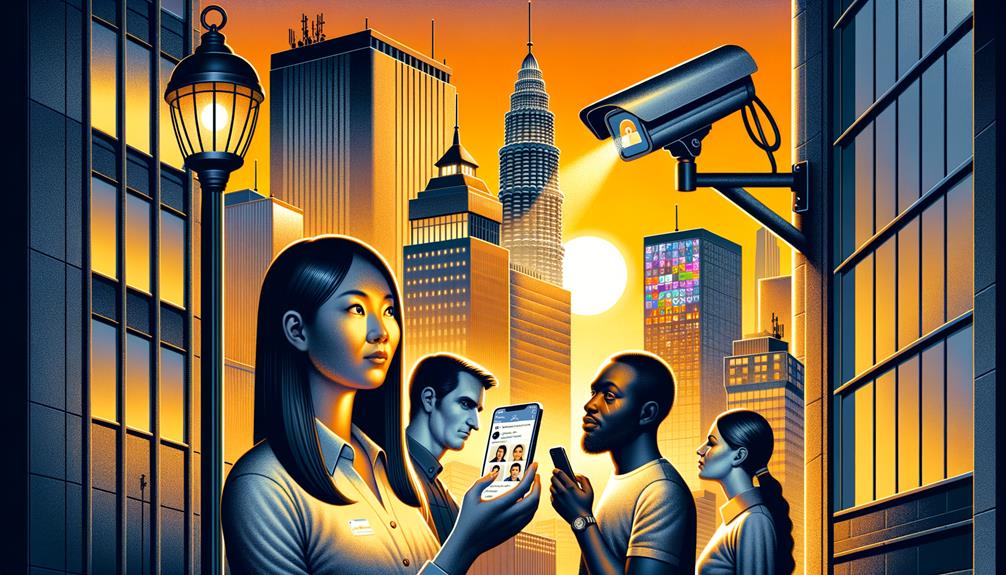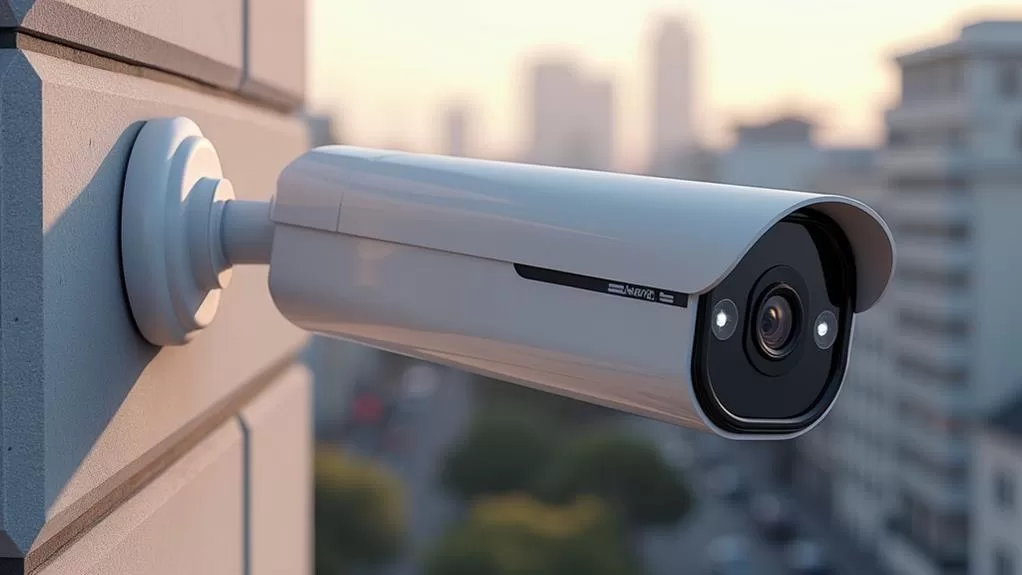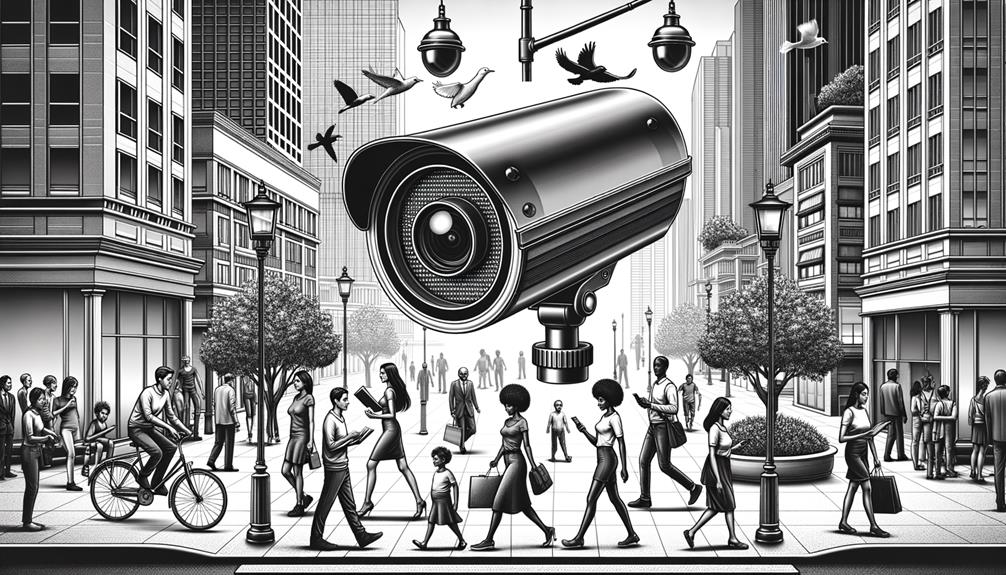I find facial recognition technology very useful in various surveillance applications. For instance, it greatly enhances airport boarding by expediting the process while improving security. At European borders, biometric entry/exit systems with facial recognition capabilities are setting new standards for accuracy and efficiency. Additionally, this technology facilitates real-time monitoring in public spaces, helping identify potential threats and locate missing individuals. Its ability to identify individuals swiftly and enhance situational awareness makes it invaluable. As I explore these uses further, I'm uncovering even more nuanced benefits and applications.
Key Takeaways
- Facial recognition in airports enhances security and verification, allowing for rapid identification and reduced wait times.
- Integration in public spaces enables swift identification of individuals of interest, improving public safety and situational awareness.
- Real-time facial recognition prevents unauthorized access and activities, enhancing security in high-risk environments.
- The technology aids in identifying missing persons, significantly contributing to law enforcement efforts.
- Facial recognition boosts situational awareness, allowing for prompt responses to potential threats and improving monitoring large crowds.
Airport Boarding Enhancements
At airports worldwide, the integration of facial recognition technology has transformed the boarding process, greatly boosting efficiency and security. The technology, introduced by Gemalto in 2017, has dramatically streamlined passenger processing. For instance, at Paris-Charles de Gaulle and Paris-Orly airports, facial recognition systems handle more than 100 million passengers annually, enhancing processing efficiency. This shift to biometric systems has also improved security measures, ensuring that passenger identities are verified accurately and quickly.
Facial recognition technology has become increasingly common in airport boarding procedures. Airports in the United States and European airlines have adopted it to expedite boarding and improve safety. With facial recognition, boarding times are reduced, creating a seamless experience for travelers.
The scalability of this technology makes it particularly effective in high-traffic environments. Its ability to enhance efficiency and security has revolutionized airport boarding processes, making it an attractive solution for those seeking control and precision in airport operations.
Biometric Border Checks Europe
As I step through the gates, Europe's new biometric border checks will monitor my every move, harnessing facial recognition technology to guarantee the prompt and accurate processing of non-EU nationals. The Schengen Area is implementing biometric entry/exit systems to enhance border security, and EU-LISA is developing a central system to record entries and exits using biometric data.
This central system will regulate the movements of non-EU nationals in Europe, ensuring that border control measures are efficient and secure. Facial recognition technology will play a pivotal role in improving the accuracy and speed of these checks, enabling enhanced processing at European borders.
EU-LISA has made significant progress in implementing a thorough biometric system. In 2022, the organization reported a 73% increase in fingerprint data sets transmitted to Eurodac compared to the previous year, a proof of its commitment to enhancing border control. The integration of facial recognition technology in these biometric border checks will further strengthen security across the Schengen Area.
With EU-LISA leading the charge, Europe is well on its way to setting a new standard for biometric border control, ensuring that the entry and exit of non-EU nationals are monitored, recorded, and diligently verified.
Monitoring in Public Spaces
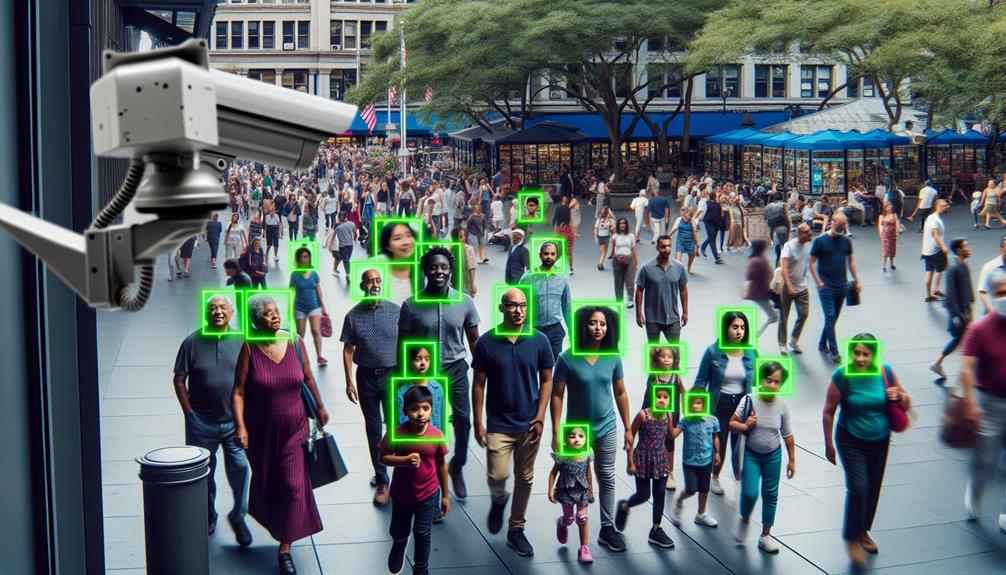
How do facial recognition technologies employed in public spaces like airports, train stations, and city centers enhance real-time monitoring and surveillance, enabling the swift identification of individuals of interest or potential threats?
Facial recognition in surveillance allows for real-time monitoring of these public areas, helping to identify and track individuals of interest. This technology can swiftly identify individuals in large crowds, detecting suspicious behavior or unauthorized individuals, thereby enhancing overall security. It also aids law enforcement agencies in locating missing persons in public spaces.
This integration of facial recognition systems in public spaces greatly strengthens monitoring and surveillance efforts.
For example, facial recognition can be used at airports to efficiently identify travelers and compare them against government databases. This integration not only speeds up the identification process but also improves airport security significantly. Similarly, in city centers, facial recognition can help identify individuals engaged in suspicious behavior, enhancing public safety.
As a result, the strategic deployment of facial recognition in public places enhances monitoring and surveillance capabilities, contributing to a safer and more secure environment.
Identify in Real-Time
Advances in facial recognition algorithms allow real-time identification in public spaces, enabling security personnel to swiftly respond to potential threats and enhance overall surveillance effectiveness. This technology empowers law enforcement agencies to effectively monitor large areas and detect suspicious activities.
Real-time facial recognition systems play a crucial role in enhancing security by rapidly identifying individuals and preventing unauthorized access or activities. With the capability to process and match faces within milliseconds, advanced algorithms ensure immediate identification. This expedited process greatly enhances security, particularly in high-risk environments like airports, government facilities, and large-scale public events.
Real-time facial recognition significantly boosts surveillance efficiency, enabling security personnel to respond swiftly to potential threats. By leveraging this cutting-edge technology, organizations can guarantee improved security protocols and a safer environment for the public. This enhanced security is achieved while minimizing the need for manual interventions and optimizing the use of security resources, making real-time facial recognition an essential tool in modern surveillance strategies.
Enhancing Situational Awareness
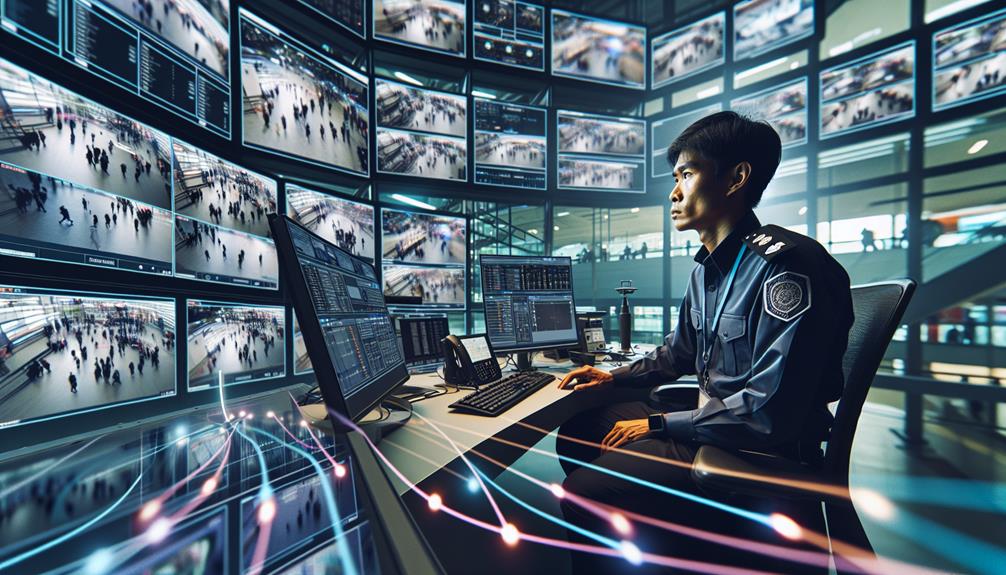
Real-time facial identification greatly boosts my situational awareness by swiftly recognizing individuals within a monitored environment, enabling security personnel to respond promptly to potential threats or incidents.
This technology is essential in both real-time and forensic investigations, as it can track movements and activities of persons of interest within the monitored area. By utilizing facial recognition systems, security personnel can receive immediate alerts about any threats detected, ensuring a swift and efficient response. This capability is particularly valuable in high-stress situations where every moment counts.
Furthermore, facial recognition improves the efficiency and accuracy of monitoring large crowds or high-traffic areas, reducing the workload on security personnel. This allows them to focus on more strategic tasks rather than manually scanning for faces.
The data collected through such surveillance can be invaluable for broader security analysis, as it provides a wealth of information about patterns and trends. Essentially, integrating facial recognition into surveillance systems greatly boosts situational awareness, leading to more effective threat containment and a safer environment.
Frequently Asked Questions
How Is Facial Recognition Used in Surveillance?
I am detailing how facial recognition is used in surveillance: Facial recognition in surveillance helps identify individuals in real-time by comparing captured faces with a database of known faces, enhancing security, crime prevention, and border security through identity verification and access control.
Which Situation Is the Best Example of the Use of Facial Recognition?
In my opinion, the best example of facial recognition technology is its use in airport security, ensuring seamless travel experiences while maintaining stringent security standards.
What Is Facial Recognition Useful For?
Facial recognition is useful for various applications including security monitoring, access control, identity verification, criminal identification, public safety, retail analytics, traffic management, event security, employee attendance, and border control.
What Are the Practical Applications of Face Recognition?
"As a surveillance expert, facial recognition has numerous practical applications for me, including security checkpoints, access control, law enforcement, border control, retail analytics, VIP identification, crowd monitoring, employee attendance, and missing persons search."


